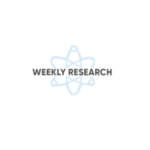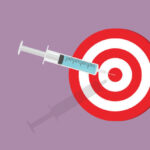If you work in healthcare, you might be curious about the key benefits of remote patient monitoring (RPM) in primary care and how primary care providers can seamlessly integrate it. This article uncovers the top 5 benefits of adopting RPM in primary care, including its potential to boost preventive care, offer valuable patient insights, enhance doctor-patient interactions, increase clinic income, and empower patients to manage their health. In addition, you’ll explore how to integrate this remote patient monitoring technology into medical practices effectively.
Remote Patient Monitoring and Primary Care
Primary care providers are the first point of contact for most patients within the healthcare system. Therefore, primary care is the first step in identifying patients at risk for chronic conditions such as hypertension, congestive heart failure, and diabetes. Adopting remote patient monitoring in primary care allows healthcare providers to monitor patients beyond in-person appointments. This regular monitoring is helping to transform patient outcomes, support and engage patients, and help them better manage their health.
Additionally, remote patient monitoring offers substantial cost-saving benefits for patients, the healthcare system, and the environment. UC Davis Health published findings that telehealth visits vs. in-person appointments can eliminate the need to commute a staggering 53,664,391 miles. Another study published in Health Affairs showed billing for remote patient monitoring increased more than fourfold in the first year of the COVID-19 pandemic. Building on this, BMC Primary Care research found that with future pandemics, and in routine care, remote monitoring patients could free up vital resources regarding the clinical team’s time.
Benefits of Using Remote Patient Monitoring in Primary Care
Frequent remote patient monitoring has the potential for early detection. Early detection of chronic conditions can keep patient conditions from escalating. It is more comfortable for the patient, saves time, and allows clinicians to focus their efforts where they are genuinely needed.
Let’s explore the 5 significant benefits of remote patient monitoring for primary care providers.
1) Remote Patient Monitoring in Primary Care Enhances Prevention
The World Health Organization states that at least 80% of premature heart disease, stroke, and diabetes can be prevented. Many emergency room visits can be avoided with appropriate remote care between office visits. Early symptoms are much easier to treat than advanced chronic conditions.
Patients generally only seek medical attention when symptoms become problematic. By that time, the condition has already developed and treatment becomes more challenging, costly, intensive, and possibly invasive. Remote patient monitoring in primary care can help providers quickly identify complications between visits so that preventive medicine may start immediately.
RPM can also monitor high-risk patients with a family history of chronic conditions like high blood pressure or diabetes. Research published in BMJ Open found that RPM can reduce acute care use for patients with cardiovascular disease and Chronic obstructive pulmonary disease (COPD).
2) Provides Clinicians with More Patient Data
Consistent and quality data is always helpful when understanding a patient’s condition. With remote patient monitoring, patients must use their remote patient monitoring devices at least 16 days a month. These frequent measurements accumulate fast and provide primary care physicians valuable insight for optimizing treatment plans. This data is far more valuable than data obtained from infrequent in-office visits.
3) Improves Physician-Patient Relationships
A common concern with telehealth and remote patient monitoring in primary care is that in-person interactions will help physician-patient relationships. However, the opposite is often true. Remote patient monitoring is not intended to be a substitute for in-person primary care visits. Rather, it focuses on providing consistent monitoring and better care between appointments so that primary care providers can understand how their patients are doing on a daily basis.
Remote patient monitoring requires at least some interaction (phone call, video call, text, email, etc.) with the patient every month. Monitoring between appointments opens up opportunity for communication between a physician and a patient because most patients only interact with their primary care doctor at in-person appointments. The extra interactions provided through RPM helps promote better relationships.
4) Increases Healthcare Provider Revenue
Remote patient monitoring can be a precious source of revenue for healthcare organizations. And top remote patient monitoring procedure claims volumes have risen 1,300% since 2019. The Centers for Medicare and Medicaid (CMS) update telehealth rules, regulations, and CPT codes yearly, as necessary, so that primary care providers may be reimbursed for remote patient monitoring services.
Remote patient monitoring allows physicians to care for more patients and encourages revenue growth. Unlike telehealth services, remote patient monitoring in primary care does not have originating site restrictions. This expands healthcare access. Rather than dealing with long wait times, transportation, and appointments, patients can use a remote patient monitoring device to measure their vital signs from their homes. The device automatically sends the reading to the RPM platform for the clinician to access immediately.
5) Supports Patient Self-Management
Remote patient monitoring expands healthcare outside the conventional clinic setting into the patient’s everyday life. When patients know their certified primary care team regularly monitors their data, they feel motivated to take their daily measurements and improve adherence to their routine and treatment plans.
Frequent measurements help patients recognize what a normal range is for their bodies. Patients can see if their health is improving or worsening over time and how changes to their lifestyle choices, such as diet, exercise, and stress, affect the readings.
The better a patient understands their condition, the more likely they are to practice healthier behaviors, watch for complications, and frequently communicate with their primary care provider.
Implementing Remote Patient Monitoring in Primary Care
If you are considering implementing remote patient monitoring for primary care, you can ask yourself the following questions. We how this helps you decide if remote patient monitoring is right for your primary care practice patients and partners.
- Is there a true need in your practice for remote patient monitoring?
- Which patients will benefit clinically from RPM?
- How many patients will qualify for reimbursement?
- What are your goals associated with implementing RPM services?
- Is it to support healthier patient outcomes, engage patients or grow revenue?
- Which devices would your patients benefit from using?
- Will you lease or buy RPM devices?
- Will you use care coordination software to help manage RPM?
- Have you considered staffing ratios, training needs, and workflow?
- Should you outsource, or can your staff implement and support new workflow?
- How will you recruit patients into your new RPM program?
- Do you understand the Centers for Medicare and Medicaid Services (CMS) billing CPT Codes?
Implementing remote patient monitoring for primary care allows healthcare teams to focus on providing better care between visits and quality care to more patients. Ultimately, your patients will have increased opportunities for communication, which will motivate them to continue to follow their treatment plans and manage their chronic conditions.
To learn more, please contact Tenovi for a free demo.






